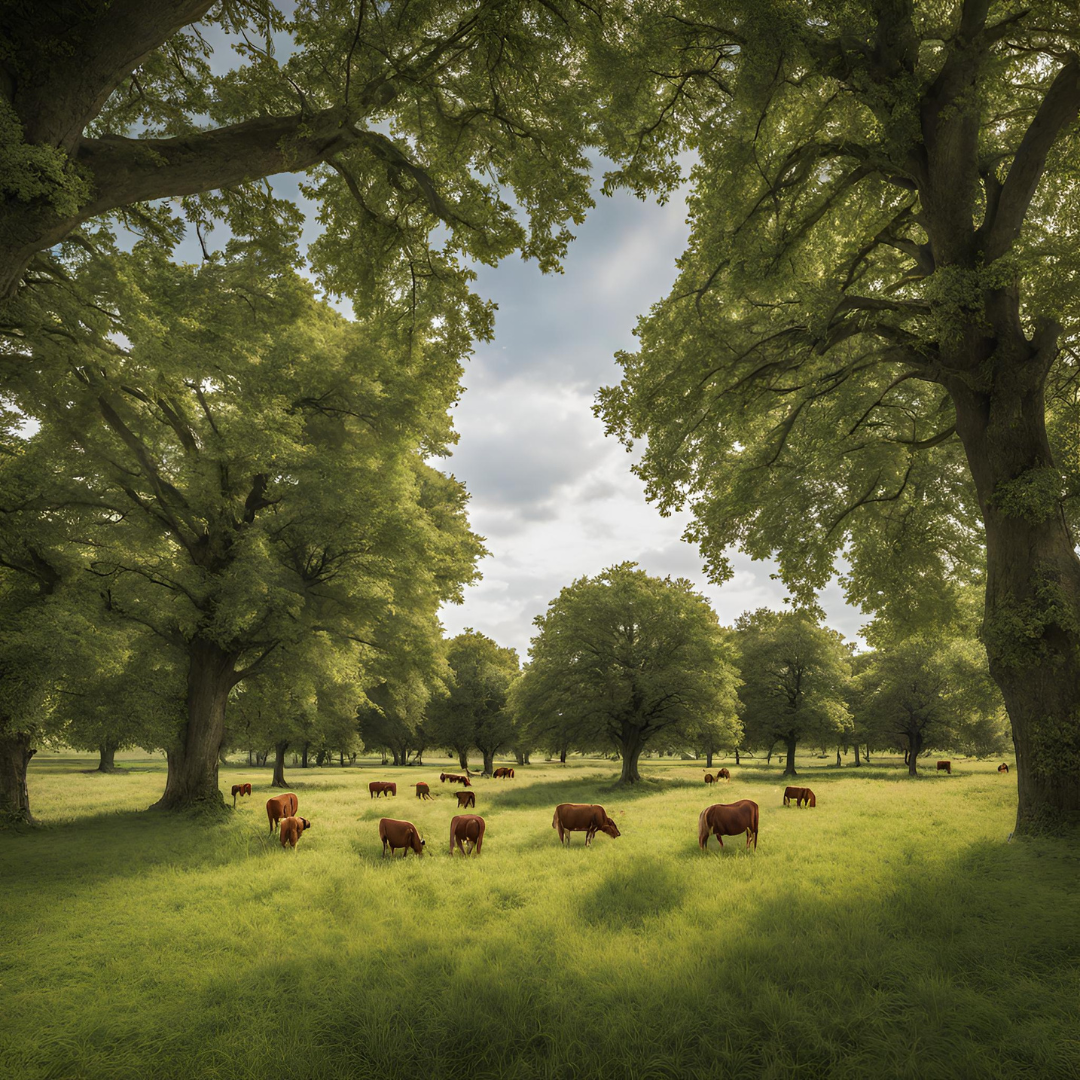Farm sustainably.
Diversify income.
Plan, finance and manage agroforestry on your farm for a more sustainable future
Plant trees.
Boost income.
Estimate your earnings
Plan your agroforestry implementation
Access additional incomes
What is agroforestry?
Agroforestry is a collective term for the deliberate integration of trees into farming systems. It includes traditional practices such as heritage orchard grazing, farm hedgerows and parkland, as well as innovative systems such as growing alleys of productive trees through arable land and forest farming.
20%
average yield advantage*
80%
reduction in soil erosion and surface runoff*
8x
more CO₂ sequestered**
*compared to conventional farming
**compared to soil-based carbon sequestration
Agroforestry increases yields
FAQs
-
Agroforestry is a collective term for the deliberate integration of trees into farming systems. It includes traditional practices such as heritage orchard grazing, farm hedgerows and parkland, as well as innovative systems such as growing alleys of productive trees through arable land and forest farming
-
There are two main types of agroforestry:
Silvo-pastoral agroforestry which means the grazing of animals under trees. The animals enrich the soil while the trees provide shelter and fodder for the animals.
Silvo-arable agroforestry where crops are grown beneath trees, often in rows which are large enough for a tractor to tend to the crops without damaging the trees. This is farming in 3D, the trees and the crops occupy different levels above ground, and also below ground where the tree roots will reach down deeper than the crops (which is where our name, DeepRoots comes from).
-
Agroforestry systems can benefit farms in a number of ways, including:
Enhance farm productivity
Increase wildlife
Improve soil health
Boost livestock welfare
Manage water flow
Trees also provide vital habitats for wildlife. They help farmers by housing natural predators to many common crop pests, thus reducing the need for pesticides.
Not only that, but agroforestry can protect food production from the effects of climate change. Trees can be harvested to offer an alternative income if one crop fails.
-
Agroforestry can help reverse declines in biodiversity, reduce emissions and increase carbon storage. This also makes agroforestry eligible for financing through carbon and biodiversity markets, as well as being eligible for certain sustainable farming subsidies.








